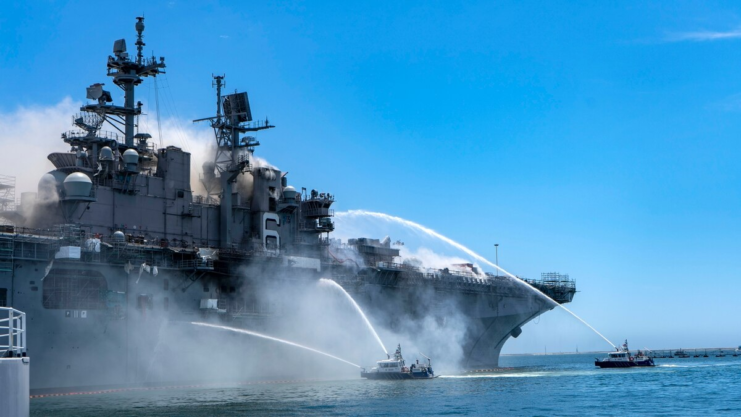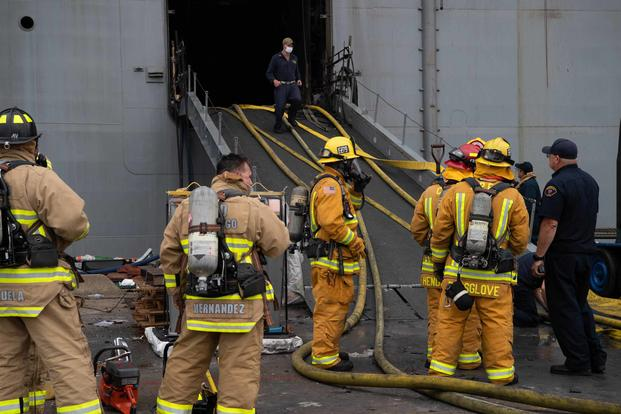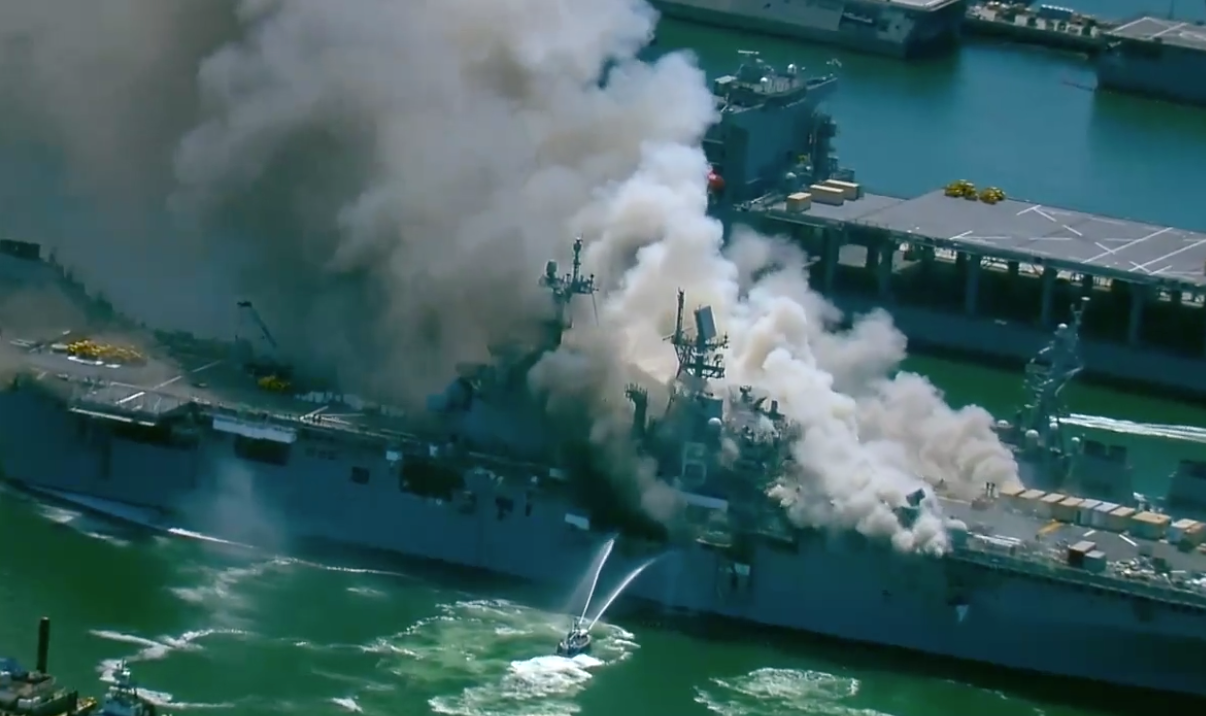Right after undergoing two years of intensive refit and upgrading, the Bonhomme Richard, an amphibious assault ship, burned through the night in San Diego harbor.
The fire’s result is that the US Navy will not have the breadth of options for which they had hoped, for the deployment of next-generation fighters in the Pacific.
In 2018, the US Navy awarded a contract worth US$219 million to National Steel and Shipbuilding Co, a subsidiary of General Dynamics, for the upgrade and refit to four large-deck amphibious ships, one of which was the Bonhomme Richard.

At the present time, it is unclear if the Bonhomme Richard is a complete loss, but what is certain is that she will require extensive repairs if she is not written off.
Estimates indicate that she has at least eight years of life left in her hull, so she would be an essential cog in the Navy’s wheel for the Pacific region for the next 10 or more years.
What is clear is the damage to the Bonhomme Richard is extensive and stretches from bow to stern. The blaze covered the well deck, the living quarters, the superstructure, and the forward working spaces.
The fire caused the collapse of the forward mast onto the superstructure. Estimates of the temperature reached inside the ship are as high as 1,000 degrees.
This heat would cause the hull’s steel to lose structural strength, which makes it a significant risk to put it back into service.
This setback has severe consequences for the Navy’s plans to have F-35B deployed continuously in the Pacific.
This forms part of the Navy’s stated deployment model, which relies upon having a permanent presence in areas such as the Middle East and the Indo-Pacific regions.

To satisfy this requirement, the Navy must have enough floating capacity to have one vessel in forward deployment, one in readiness to leap into action, one being maintained, and one preparing for deployment.
This means the Navy requires a minimum of four ships in the cycle. Still, with the need to have a longer time in maintenance to upgrade the vessels to carry the F-35Bs, the service needs at least five ships in the cycle.
The F-35B is the only deploy-able fifth-generation fighter that the Navy has, and the service would want them deployed all of the time, but only half the vessels can carry these fifth-generation fighters.
The Marines want to reduce their land-based squadrons, so the Bonhomme Richard’s damage means that Combatant Commanders will have less sea-based F-35s, with which to work.
The Tripoli, another amphibious assault ship, is due to be commissioned this month but she will be facing up to two years of work-ups so the loss of the Bonhomme Richard, at this time, is a severe blow as she was due back into the rotation by the end of 2020.
Another Article From Us: USS Gabrielle Giffords Still Missing Cruise Missile 9 Months After Firing One
This setback means the Navy will have to come up with contingency plans very quickly. They could ask the current ships to undertake more extended deployments or alternatively bring back some inactive reserve fleets. Either way, the impact on the deployment of the F-35 fighters cannot be underestimated.
